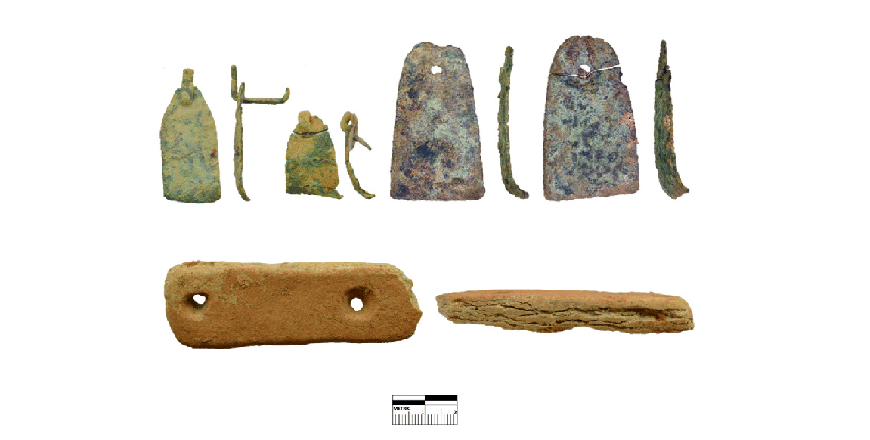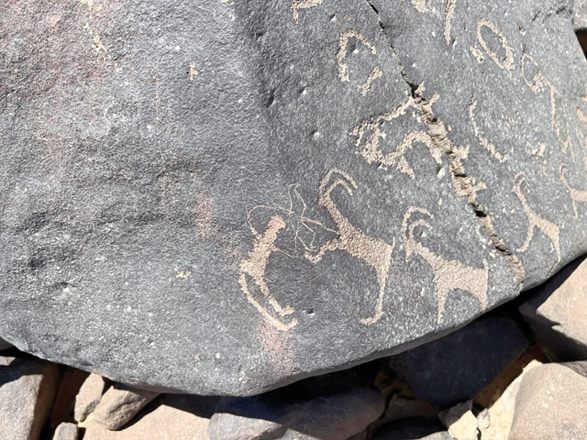You are here
Dutch scholar researches ‘entire history’ of basalt desert in Jordan
By Saeb Rawashdeh - Oct 23,2017 - Last updated at Oct 23,2017

Peter Akkermans
AMMAN — The Jabal Qurma Archaeological Landscape Project started in 2012, with extensive field surveys and excavations in the basalt desert in the east of Azraq, according to a Dutch archaeologist.
“Since 2012, every year, we’re in the field with a team of about 10, for a period of about two-and-a-half months,” said Professor Peter Akkermans, who teaches Near Eastern Archaeology at Leiden University, in the Netherlands.
Their excavations take place at various places in Jabel Qurma, around 30km east of Azraq, such as the ancient stone-walled enclosures and ancient burial mounds, he added.
The Dutch archaeologist has conducted excavations and surveys in Turkey, Syria and Jordan in the past decades, and in 2012, he became the director of the Jabel Qurma Archaeological Landscape Project in the Kingdom.
The team is interested in the entire history of the basalt desert in Jordan, the expert pointed out, from prehistory —about 12,000 years ago — until 19th and 20th century.
“However, our focus at the moment is on the historical period between about 1000 BC [the so-called Iron Age] and about 800AD [roughly Ummayad period],”Akkermans added.
According to the scholar, this long period has not been investigated by archaeologists until now.
“To a very large extent, this period in the desert between 1000 BC and 800 AD, is still a ‘terra incognita’, which is hardly or not included in any archaeological discussion,” he underlined.
Scientists are simply not aware of the happenings in those vast deserts, but nevertheless they often tend to present these regions, either explicitly or implicitly, as marginal environments inhabited by marginal people, of little or no relevance for local archaeology, the scholar explained.
“I believe this is wrong and does not do justice to the desert people and their lifestyle in antiquity. Our research in the Jebel Qurma region is new and yields wholly new data and insights; piece by piece we are beginning to understand the archaeology of the region and its importance for Jordanian archaeology in general. For example, at the moment we are working mainly on ancient burials in the desert,” said Akkermans.
The team led by the Dutch scholar studied burial sites during their excavation seasons.
“There are very large numbers of burial cairns of different shape and size in the Jebel Qurma region, but until very recently, we had no clue about their date, construction, kind and nature of burials inside them, mortuary practices in general, etc. In short any basic archaeological information about these tombs was virtually absent,” he continued.
“Who were the people who were buried there and who buried them?” he asked.
“The question is urgent, because of ongoing looting and plunder of tombs, even in these remote areas,” he underlined, stressing that they are now busy with a systematic and in-depth investigation of these burials, in order to understand the treatment of the deceased people in the past and the diversity in the desert.
“Skeletal analysis may help us to understand not only burial practices but also ancient way of life, including issues such as local health and diet,” Akkermans said.
Epigraphic and iconographic data of the Black Desert is very rich and the scholar drew conclusions that people in the past “intensively used the area for those purposes”.
“What was the message which the producers of the rock art tried to convey? And why did people in the desert start to write after all?”
That is a major research question within the Jabel Qurma project, which investigates the local archaeology and its relationship to rock art and inscriptions, Akkermans underscored.
“The pieces of rock art show images of lions, gazelles, horses and large birds that may be ostriches. There are also many hunting scenes or battle scenes, with horsemen armed with spears and people with bows, swords and shields,” the professor outlined.
Moreover, most of the inscriptions are in the “so-called Safaitic script”, an alphabetic pre-Arabic script that was widely used in the desert around 2000 years ago, the scholar noted.
“The inscriptions tend to be very short. Most of the texts are simply names, like ‘so-and-so, the son of so-and-so’, “ Akkermans explained, adding that “some texts contain information on what people were doing, with a few hinting that the people who inhabited Jabel Qurma were in contact with the Nabataeans”.
“I am on the lookout for the Nabataeans,” one inscription reads. Other inscriptions tell of the challenges and setbacks encountered by the people who lived at Qurma, the archaeologist stressed.
“May there be strength against hunger,” one inscription reads, while another was written by a man who said he was “distraught over his beloved”, the Dutch researcher quoted.
Regarding future plans, Akkermans hopes to continue his research in the desert in Jordan for many more years.
“I find the basalt desert east of Azraq both extremely beautiful [from an environmental and landscape perspective] and extremely interesting [from an archaeological perspective]. At the moment, we are only at the very beginning of an understanding of the past of the Black Desert,” the scholar emphasised.
“My work takes place pleasantly and efficiently, in close cooperation with the Department of Antiquities in Jordan [DoA], and the help of the DoA and its staff is essential for the success of my research in the desert,” Akkermans highlighted.
“In short, I hope to contribute substantially to the archaeological investigation in Jordan’s desert for the coming years; I find it a true pleasure to work here!”
Related Articles
AMMAN — Recent fieldwork at the vast desert region in north-eastern Jordan has revealed an immensely rich heritage of an area that is diffic
AMMAN — The Safaitic inscriptions within the Black Desert depict scenes from the daily life of the pre-historic inhabitants, in this a
AMMAN — The inhabitants of the inhospitable Black Desert were often overlooked or wrongly perceived by contemporaries from ancient political



















